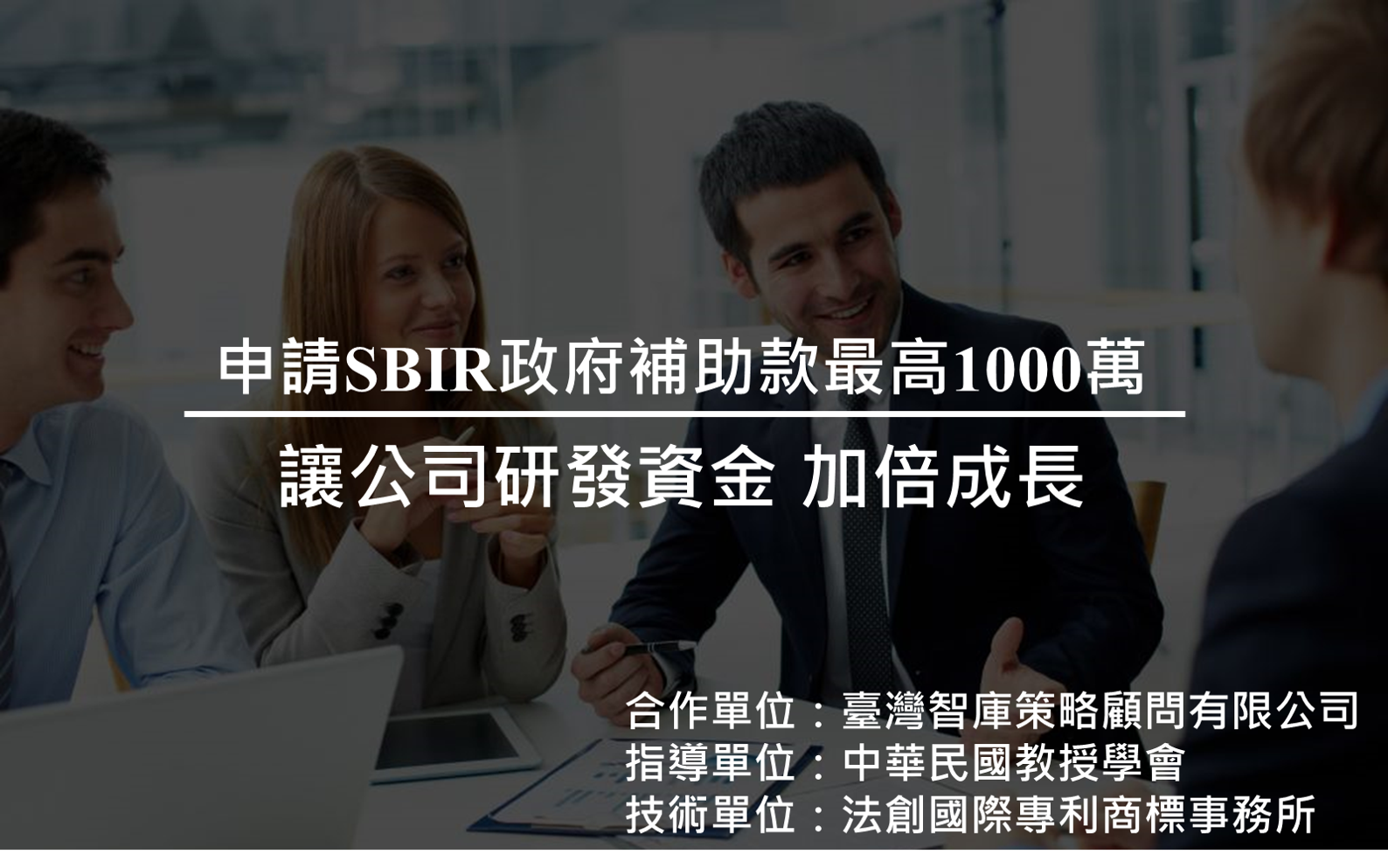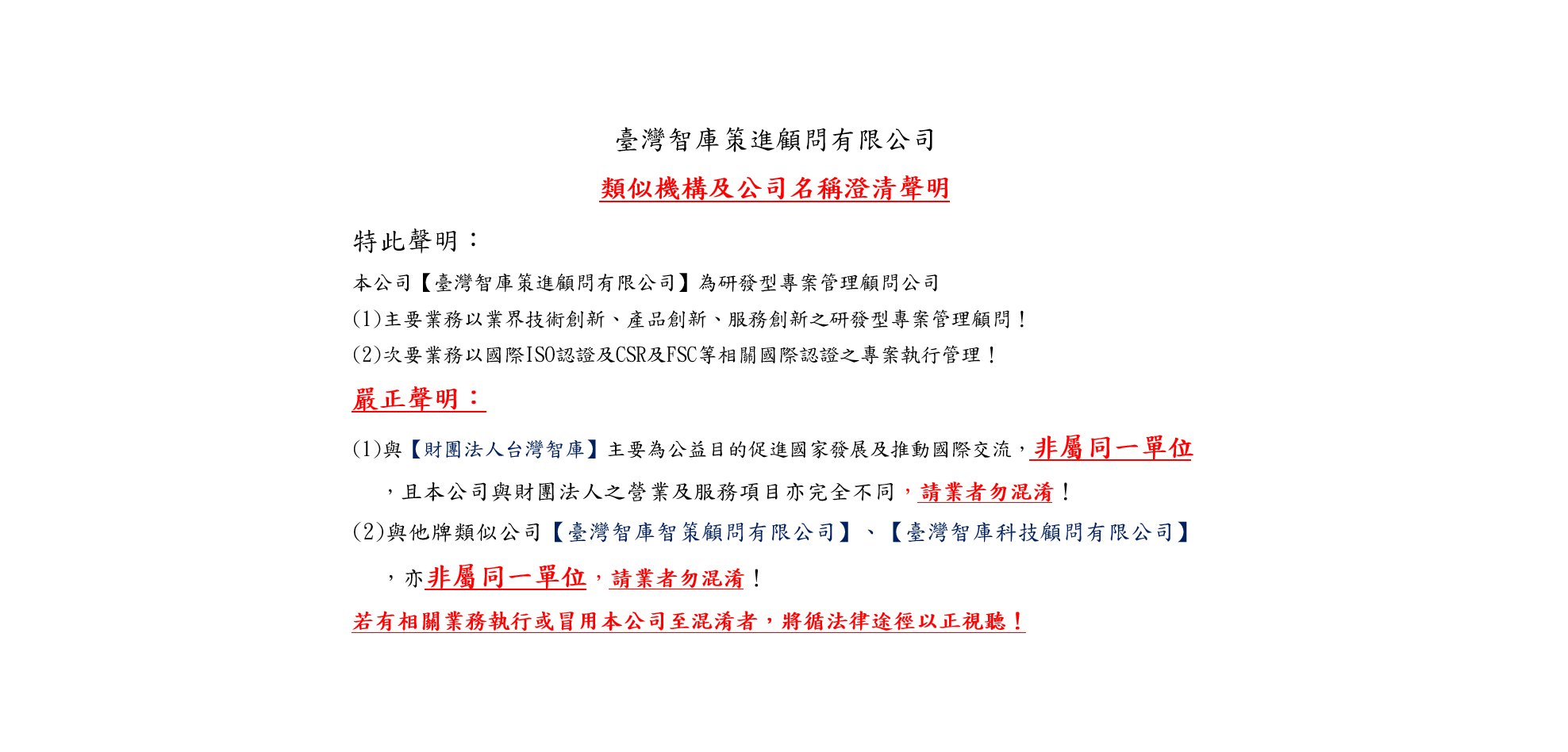
什麼是SBIR?計畫的緣起與目的?
計畫緣起
民國85年「經濟暨合作發展組織」(OECD)發表「知識經濟報告」,提出知識的創新產出與運用已成為國家競爭力及經濟成長的主要驅動力之論點,我國廣大中小企業普遍面臨缺乏技術、人才與資金的困境,經濟部依據立法院科技及資訊委員會決議,自民國88年2月起,推動執行「小型企業創新研發計畫(原名:鼓勵中小企業開發新技術推動計畫)」(以下簡稱SBIR計畫),以鼓勵中小企業進行產業技術與產品之創新研究,擴大民間研發的投入。
計畫目標
本計畫之目標在於運用政府政策工具,依中小企業所提之研發計畫提供資源協助,推動中小企業廠商進行產業技術、產品與服務之創新研發計畫,引導中小企業投入研發活動,帶動中小企業研發人才的培育、研發能力的累積,提高我國中小企業技術水準、進而提升我國產業之競爭力及加速傳統產業之轉型與升級。
Introduction to SBIR
Inception & Purpose
To encourage and assist domestic SMEs to engage in active technology research and innovation or product development, Since 1999 the Small Business Innovation Research (SBIR) program has been launched in accordance with the "Regulations for Helping to Subsidize and Guide Industrial Innovation Activities by the MOEA." Through grants and subsidies provided by SBIR, the risks and costs borne by SMEs engaging in innovation and R&D activities will be reduced. The program encourages SMEs to carry out active innovation and helps expand private-sector investment in R&D so that the results and achievements will help the country further its economic development.
Project Characteristic
There are two categories of SBIR plans:
Innovative Technologies
Innovative research in technologies or product indicators in the proposal should be innovative or have the potential to raise technical standards in Taiwan industries.
Innovative Services
Facilitates the creation, distribution and value adding of innovative or forward-looking knowledge for industrial development, as well as the establishment of service platforms, systems or models of core knowledge.
Demand-oriented, driving innovative business models and creating new service industries through the integration and innovative application of technologies, or initiating business or industry-related activities with service innovations.
Integration and use of related technologies to build or demonstrate creative designs or digital contents with technological know-how and intelligent value.
The application process involves three phases:
Pilot Study/Preliminary Planning (Phase 1)
NT $1,000,000 total governmental subsidy for 6 months
A small-scale experiment or statistical analysis of the creative concept that can potentially benefit industries so as to validate that concept as being viable. Applicants must describe the key problems addressed, the creative concept they intend to use, anticipated benefits to industries, as well as relative R&D track records and implementation plans.
R&D/Detailed Planning (Phase 2)
NT $10,000,000 total governmental subsidy for 2 years
R&D of a product, production method or service mechanism based on a tangible and feasible creative concept expected to benefit industries. The R&D of a production method can extend to the trial production or ramp-up stage. Applicants must describe the key problems addressed, the creative concept they intend to use, anticipated benefits to industries, as well as relative R&D track records and implementation plans.
Value-Added Applications (Phase 2+)
NT $5,000,000 total governmental subsidy for 1 year
This involves the implementation and wide application of R&D results in Phase II so as to meet market and customer demand. The focus of R&D extends from the emphasis on the design of technical innovations to the production of the technical application. They may include engineering techniques, moulding development techniques, product design, trial production and ramp-up techniques, or primary market surveys. Applicants must describe the application of the developed technique, feasible implementation, commercialization target and expected benefits.
Application Criteria
To apply for funding support under the SBIR plan, an enterprise must conform to the following criteria:
Sole proprietorships, partnerships, limited partnerships, or companies which are legally registered and incorporated in the R.O.C. in accordance with the "Standards for Identifying Small and Medium-sized Enterprises" that meet the following criteria.
Manufacturing industry: capitalization below NT$80mn or with less than 200 employees covered by labour insurance.
Service industry: revenue from the previous year below NT$100mn or with less than 100 employees covered by labour insurance.
It must owe no back taxes to the government, and must have no record of contract cancellation when participating in government-related technology development plans over the past five years.
In the case of R&D alliance applications, the applicant must be an SME; however, the application may be submitted jointly with a university or college, foundation, or other domestic or foreign organization. At least half of the members of the alliance must be SMEs; in principle, each SME must participate in at least one of the project sub-items.
The Regulations are only applicable to new R&D programs for companies and technologies or products for which development is completed shall be barred from the application and the applicant may not apply for other government project subsidy or grant for an identical or similar project.
參考自經濟部中小企業處




